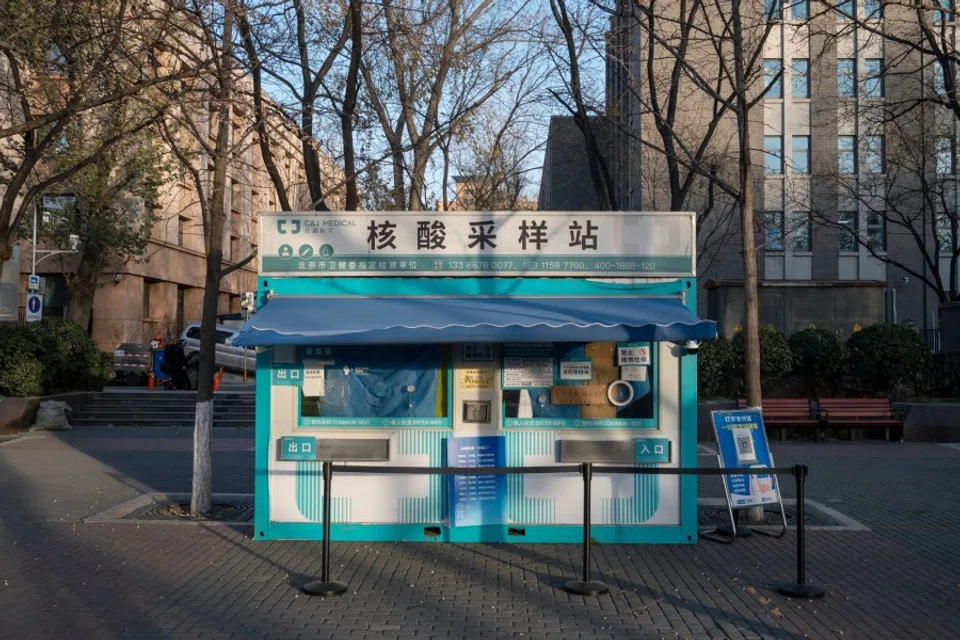From zero-Covid to living with the virus: Chinese society's adaptability put to the test
Following the protests against harsh Covid measures, China seems to be going from strict lockdowns to opening up and relaxing controls almost overnight. While the health system is under strain and nerves are wrecked, the Chinese people have shown that they are quite capable of adapting to change, especially if large cities like Beijing lead the way.

China's speedy easing of Covid controls has been surprising. A month ago, the authorities rolled out "20 measures" to improve Covid control policies. Those on the outside were encouraged, but no one was sure how quickly China would change gears, and whether it would be one step forward and two steps back.
In the second half of November, protests broke out in many places against the high-pressure Covid measures. In late November, the Chinese leadership relented and said the Omicron variant was weaker, stressing that there was a new direction and a new mission in Covid controls. In the two weeks that followed, besides quarantine restrictions for people entering the country, practically all other Covid measures were relaxed.
A colleague in China sighed and asked if this was called "lying flat completely", to which another colleague jokingly responded that this was not only lying flat, but "falling flat".
Testing booths in the cities were "uprooted" overnight, while those with mild or no symptoms were allowed to recover at home. Those travelling between regions were no longer required to provide nucleic acid test results, and arrival testing and quarantine were no longer implemented. At midnight on 13 December, the Communications Itinerary Card app (通信大数据行程卡) that tracked people's movements during the pandemic was also deactivated.
'Lying flat completely'
At this week's newsroom meeting, HQ colleagues mentioned that some academics said in the next three or four months, China will build an "immunity barrier" (免疫屏障) in the entire community, and during this time it will undergo "shock therapy". A colleague in China sighed and asked if this was called "lying flat completely", to which another colleague jokingly responded that this was not only lying flat, but "falling flat".
The Beijing health commission revealed that on 11 December, fever clinics across the city saw 22,000 patients, 16 times the number from a week before.

Following the loosening of previously strict Covid measures, the virus spread rapidly in some Chinese cities. Over the past week, half of our colleagues in the Beijing office have been diagnosed with Covid-19; in the past few days, Beijing's roads and public spaces were as quiet as they were under lockdown, with many people infected and staying home. Looking at the current situation and thinking back on the Covid controls over the past three years, it seems like two different worlds.
Beijing is one of the cities that saw a large-scale rebound of cases following the easing of measures. While official figures do not show a jump in cases, just looking at the infection rate among those around me, the reach of the virus and the number of confirmed cases is probably far higher than the numbers reported by the authorities. Beijing's medical system has been put under a stiff test over the past few days. The Beijing health commission revealed that on 11 December, fever clinics across the city saw 22,000 patients, 16 times the number from a week before.
Medical supplies low
The Economic Observer reported that medicines for fever, cough and inflammation are sold out in Beijing, with shortages at pharmacies and some hospitals; some infected doctors also cannot get their hands on medicine. Hospital outpatient clinics are seeing long queues, with people swarming to hospitals for treatment as they are unable to purchase thermometers and fever medicine.
... peach in Chinese (桃, tao) sounds the same as "escape" in Chinese (逃, tao), symbolising escaping misfortune - even if they cannot get medicine for fever and cold right now, eating tinned peaches also provides some comfort.

Besides medicines, even tinned peaches are also hot sellers. Why tinned peaches? A Chinese friend said it is sentiment; as a child, they ate tinned peaches when they were sick, and now being hit by Covid, they need some mental support. A netizen also explained that peach in Chinese (桃, tao) sounds the same as "escape" in Chinese (逃, tao), symbolising escaping misfortune - even if they cannot get medicine for fever and cold right now, eating tinned peaches also provides some comfort.
With the flick of a switch
China has taken a crucial step in exiting from its zero-Covid policy. With a wave of the wand, excessive Covid control measures suddenly transformed into "living with the virus". Going from one extreme to another inevitably throws people into a state of panic. China has poured major resources into its zero-Covid policy over the last three years, but failed to make adequate preparations for living with the virus. Whether in terms of rolling out elderly vaccination campaigns or strengthening the primary healthcare system, a protective barrier has yet to be formed.
... China could end up with an estimated 363 million infections, some 620,000 deaths, and 32,000 daily admissions to intensive care units...
Pessimists think that this is only the start of China's troubles. On 4 December, Huang Yanzhong, senior fellow for global health at the Council on Foreign Relations, warned in a New York Times article that China could end up with an estimated 363 million infections, some 620,000 deaths, and 32,000 daily admissions to intensive care units if a quarter of its population is infected within the first six months of the government letting its guard down - a rate consistent with what the US and Europe experienced with Omicron.

However, the Chinese people showed that they were highly adaptable when the Covid-19 pandemic struck. This offers hope that China has the ability to segue from living under a strict zero-Covid policy to living with the virus. In the process, the people's ability to overcome their fear and anxiety and scientifically understand that the coronavirus is no longer the same one that had hit Wuhan three years ago is key. Chinese state media once again recently called on Zhong Nanshan, an academician of the Chinese Academy of Engineering, to calm the public and dispel their doubts in the hope of bringing the three-year tough Covid measures to a close.
Resilience to weather the storm
Based on public reactions this past week, Chinese society is becoming more accepting of the coronavirus and even showing resilience in weathering the storm. While there are still Beijing residents rushing out to buy medical supplies and waiting in line outside hospitals, most of them are handling positive test results well and recovering at home. Netizens even joked that they were characters from Jin Yong martial arts novels: Yang Guo (homonym for "阳过", or having tested positive for Covid-19 before) and Yang Kang (homonym for "阳康", or having recovered from Covid-19). Yet others wonder anxiously when it would be their turn since people around them have already been infected.
... Beijing's experience is a weather vane - if Beijing can tide over this storm, more regions can have hope of having an orderly transition to the post-Covid era and the resumption of normal life.

Due to China's massive geographical differences and diverse ethnic groups, big cities have the advantage in terms of medical resources, local finances and public health awareness, and are better equipped to fight the raging Covid battle. Other regions may not be able to replicate Beijing's experience and it is still too early to determine how the pandemic will develop and whether various regions can successfully overcome it. However, as China's capital, Beijing's experience is a weather vane - if Beijing can tide over this storm, more regions can have hope of having an orderly transition to the post-Covid era and the resumption of normal life.
This article was first published in Lianhe Zaobao as "从一个极端到另一个极端".
